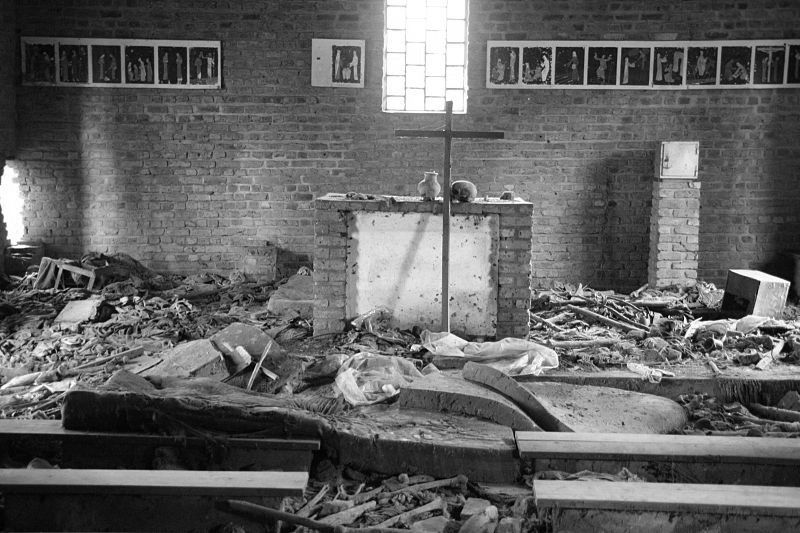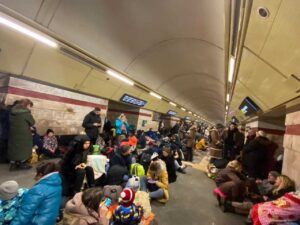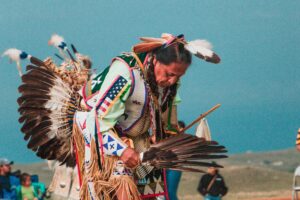Holocaust Memorial Day: How History Repeats Itself

Ntarama Church Massacre - Photography by Scott Chacon
By Ava Callanan and Miriam Fanin
Holocaust
On January 27th the World remembers the Holocaust. The day was symbolically chosen, as it is the day when Auschwitz was liberated by the Red Army.
The term “Holocaust” is commonly used to describe the systemic state-sponsored killing of six million Jewish men, women and children, and millions of others1 including, homosexuals, prisoners of war, political opponents, Jehovah’s Witnesses, Roman Catholics and dissenting Protestants, Freemasons, black people and other “non-aryans”, people with mental health problems, disabled people. and the Sinti and Roma by Nazi-Germany.
Israel has a different day of commemoration, Yom HaShoah, which changes every year in accordance with the Jewish calendar, and is set on the 27th day after the start of the Jewish calendar.
The Holocaust is often addressed as Sho´ah, the Hebrew word for catastrophe, which does not have the same religious connotations and refers specifically to the Jews victims. It is not possible to have the exact number of victims, as there is no official master list. Historians have used a variety of sources to estimate the casualties: 6 million jews, 7 million soviet civilians, 3 million soviet prisoners of war, 1.8 million polish non-jew civilians, between 250,000 and 500,000 Roma and thousands of homosexuals2.
Genocide
When looking at the systemic and targeted killing of million of people based on their ethnic group, Polish lawyer Raphäel Lemkin created the word genocide in 1944, based on the greek word for people (genos) and the latin suffix for killing (-cido). In 1946 the United Nations General Assembly (A/RES/96-I) recognised it as a crime in international law and in 1948 it was codified as an independent crime (Convention on the Prevention and Punishment of the Crime of Genocide, or shortly Genocide Convention). The Genocide Convention has been ratified by 149 states and it is considered part of the general costumary international law, making it binding.
According to Article II of the Genocide Convention “genocide means any of the following acts committed with intent to destroy, in whole or in part, a national, ethnical, racial or religious group, as such:
- Killing members of the group;
- Causing serious bodily or mental harm to members of the group;
- Deliberately inflicting on the group conditions of life calculated to bring about its physical destruction in whole or in part;
- Imposing measures intended to prevent births within the group;
- Forcibly transferring children of the group to another group.”
The Convention also states that the crime of genocide may take place in the context of an armed conflict, international or non-international, but also in the context of a peaceful situation. The single most important point we have to keep in mind when looking at the definition is the word “intent”, which is also the most difficult element to prove in court cases. In the case of Nazi Germany, the so called Final Solution, or the plan to eliminate the entirety of the Jewish population through death camps, was proof enough to define the Sho´ah as a genocide.
Genocides
Historically the Sho´ah is not the only case of genocide. One of the most brutal was the Rwandan Genocide, occurred between April 6th and June 22nd 1994. In just 100 days, more than a million people belonging to the Tutsi group were killed by the opposing Hutus3. The Hutus represent the majority of the Rwandan population, but the Tutsis were the ruling class for decades. When the country became a Belgian colony in 1916, the colonists saw the Tutsi as a superior group and supported their monarchy, sharply increasing the economic divide between the two groups. This quickly became a source of resentment for Hutus, who saw the Tutsis as a symbol of colonial oppression and “the enemy within”. When the country became independent in 1961, the Hutus, being the majority, easily won the first elections and subsequently intermittent violence between the two groups started to break out, forcing thousands of Tutsis to seek refuge in neighboring Uganda. Between 1990 and 1993, the country was at war with the Uganda-based Rwandan Patriotic Front (RPF, a Tutsi majority militia) and the majority of the Hutus became convinced that the country would not be able to live in peace unless the Tutsis were completely exterminated. Subsequently, the government started to train armed groups to wipe out the Tutsi the Interahamwe militia. On April 6th 1994, the Hutu President of Rwanda, Juvénal Habyarimana, was killed in a plane crash that was blamed on the Tutsi. This led to the start of the murder of Tutsi and moderate Hutus, and all of their families. Radio stations broadcasted the names of the targets and as ID cards had ethnic belonging on them, it was easy to set up roadblocks to quickly identify and kill Tutsis on the spot. Hutus husbands killed their Tutsi wives and children. While this was happening, the UN already had a peace force deployed in the country, but they did nothing to stop the killings, saying it was not within their mandate. The genocide only stopped when the RPF, backed by the Ugandan army, entered the country and seized Kigali, the capital. Two million Hutus fled to Congo in fear of repercussions. In 1995, the United Nation Security Council established the International Criminal Tribunal for Rwanda, with mandate to prosecute persons responsible for genocide and other serious violations of international humanitarian law committed in the territory of Rwanda and neighbouring States, between 1 January 1994 and 31 December 1994. The Tribunal indicted 93 people (all of which Hutus) and sentenced 62.
Another case of genocide, although contested, happened in what is today Turkey. In 1915, the then-Ottoman Empire, led by the Committee of Union and Progress (CUP), an extremist faction of the Young Turks movement, started the systematic annihilation of its Armenian population, which at the time amounted to approximately 2 million. The Armenians were Christians and traditionally located in Anatolia since the sixth century BCE. It is certain that the extermination started among the Ottoman army, which suffered a great defeat against Russia in 1915 and blamed it on Armenian treason. The Ottoman soldiers started killing their Armenian comrades, and it quickly spilled over to Armenian civilians in villages. The government started to deport Armenians living in Eastern Anatolia, disguising it as a relocation program and with the pretext that their presence was a potential source of treachery during the war . When Armenians resisted deportation, the authorities used it as a pretext to increase the atrocities. Armenians were forced into death marches, gathered in concentration camps and murdered by unofficial armed militias. In the following year, there were only one million Armenians left, and by 1923, when the Republic of Turkey was founded, the entire Armenian population in Turkey had virtually disappeared, deprived of their land and identity, forcefully converted to Islam or mass killed. All of this has been directly reported to Western nations by witnesses such as diplomats, journalists, missionaries and foreing soldiers. The survival of the Armenians is often credited to the humanitarian intervention led by American Ambassador Henry Morgenthau, who convinced the U.S. Congress authorized the formation of a relief committee, the Near East Relief. After the war, almost four hundred CUP officials implicated in the genocide were arrested. Several domestic military tribunals were convened and set charges such as unconstitutional seizure of power, subversion of the legal government, conduct of a war of aggression, conspiring the liquidation of the Armenian population and massacre.
The Turkish government to this day contests the intent of the killing, saying that there was never a plan to eradicate the ethnic and religious minority, as it was a rebellious element that had to be pacified during a national security crisis4. Great Britain and Israel also refuse to acknowledge it as genocide. As of 2022, only 33 countries have officialy recognised the genocide, among which most of the European Union, the United States, Russia and the Holy See.
It is happening under your nose: The Uyghur Genocide in Xinjiang
When looking back at historical events like the Holocaust we see the impact they had and continue to have. However, it is also vital to use these events to reflect on what is currently happening in the world. All around us, history continues to repeat itself, this can be seen in Xinjiang, China where a genocide is happening against the Uyghur population. There are around 10,000,000 Uyghurs in China and Islam is the predominant religion among the Uyghur population, . Uyghurs are a Turkic speaking people and their language is among the oldest Turkic languages in Central Asia. Uyghurs are located in the Xinjiang Uyghur Autonomous Region, which is located in North West China.
In the 1950s, after Xinjiang was established as an autonomous region, considerable numbers of Han, another East Asian group that is native to China, and is considered to represent the majority of China’s people, began moving into the region. After 1990 the Han population constituted two-fifths of Xinjiang’s total population. Issues began to develop over time as there was an economic disparity between Han and Uyghurs and ethnic tensions also manifested between the two populations. As these divides worsened, it led to protests and riots between Han and Uyghurs. In one significant incident in July 2009 in Ürümqi, it was reported that 200 people, mostly Han, were killed and another 1,700 people were injured. This trend continued as there were increases in knife attacks and suicide bombings, as well as violent outbreaks. The Chinese authorities responded with a crackdown which targeted the Uyghur population significantly. There was an increased focus on Uyghurs that the Chinese authorities considered to be dissidents and separatists. The Chinese authorities set up increased controls such as cameras, checkpoints and a heightened police presence. Punishments included shootings, arrests and extended jail sentences, but it did not stop there. Between 1,000,000- 3,000,000 Uyghurs have been placed in “political training centres” which in reality are high-security prisons. When the U.N. called on China to end these camps, China denied their existence. There is undeniable evidence of China targeting religious figures, there are 1000s of Imams who have been arrested ,detained indefinitely for simply leading prayers and charged with propagating extremism. China’s President Xi Jinping is feeding into this narrative of tying religion with extremism and also stated that “all religions in China would be Chinese in orientation”.
There have been countless revelations from those who have escaped the camps, such as reports of torture, mass rape, sterilisation, forced abortions and involuntary organ transplants. China’s detention camps further contribute to repressing the Uyghur birthrate and implement forced labour.
Human Rights Organisations have protested against China and spoken out against the controversies there. Human rights campaigners are stating that China is trying to eradicate Uyghur culture through methods that can only be described as genocide.
It is not just human rights organizations speaking out against China but also several countries. The U.S., Canada and the Netherlands, among others, have accused China of committing genocide, defined by Article II of the Genocide Convention, against the Muslim ethnic minority.
China has vehemently denied these allegations and is attempting to justify the crackdown by falsely tying extremism to religion and the threat of the Uyghur population. The Chinese Communist Party (CCP) have been accused of capitalising on the global War on Terror which began to take shape after 9/11 in 2001. The CCP developed propaganda whereby separatists were included as part of the War on Terror and continues to take advantage of the random outbursts of violence in Xinjiang and rebranding them as organised terrorist attacks by the Uyghur population. Beijing has consistently turned down repeated requests from the UN High Commission for Human Rights to visit to investigate further into these claims.
The Uyghur tribunal was established as an independent fact-finding effort located in London. The tribunal has held multiple hearings that have exposed the events happening in China. This led the UK parliament in April 2021 to declare that China was committing genocide in Xinjiang. UK Foreign Secretary Dominic Raab outlined the treatment of Uyghurs as “the most appalling violations of the most basic human rights”. The Biden administration has also been speaking out against China and has created laws in response to the reports of genocide. Biden placed a ban on all imports from Xinjiang and declared sanctions on several Chinese companies for their involvement in the genocide by assisting with surveillance or supporting forced labour.
The French Parliament voted 169 votes to one that the National Assembly “officially recognises the violence perpetrated by the People’s Republic of China against the Uyghurs as constituting crimes against humanity and genocide.” There has been a call for action which can also be seen in response to the Olympics, both the Winter and Summer Olympics will be held in Beijing but due to recent events, many countries have established a diplomatic boycott such as the U.K., the U.S., Canada and Australia. Japan is also refusing to send a Government official but has not officially declared a boycott of the games. Along with this, the International Olympics Committee has been criticised by an activist coalition that the Games have not ensured that no forced labour by Uyghurs will be involved in the production of official Olympics merchandise. This begs the question, is enough being done?
Although what the Biden administration is attempting to implement is admirable, this is difficult as products such as Xinjiang cotton are being sold to U.S. companies, such as Walmart and Lululemon, through intermediaries. There is also concern over large companies such as Tesla ignoring the law as was seen after Elon Musk set up a Tesla showroom in Xinjiang. Musk has faced strong criticism with the Council on American-Islamic Relations saying that Tesla was supporting genocide.
On Holocaust memorial day we at Activism Academy want to highlight and inform on the struggles and human rights abuses happening right now. Genocides and ethnic cleansing are crimes against humanity that should not be tolerated no matter the political or financial cost. We will be providing more information about the Uyghur genocide over the coming weeks. You can research online and learn more about those suffering at the hands of the Chinese authorities from websites such as the Xinjiang Victims Database (https://shahit.biz/eng/). You can also sign petitions such as this one from Change.org (Uyghur petition) and donate through websites such as Save Uighur (Donate).
Footnotes:
1: As defined in Britannica (https://www.britannica.com/event/Holocaust)
2: Data by the United States Holocaust Memorial Museum (https://encyclopedia.ushmm.org/content/en/article/documenting-numbers-of-victims-of-the-holocaust-and-nazi-persecution)
3: It is important to note that rather than being ethnic groups, Tutsi and Hutu were divided by their occupation. The Tutsis were herders and generally richer than the Hutus, who were farmers. It was possible to marry between members of different groups, as well as move from one group to the other. It was only during the Belgian occupation that the division between the two groups started to imply an ethnic difference.
4: In 2006 the European Parliament established the recognition of the Armenian genocide from Turkey as a clause for the country to be able to join the Union.


